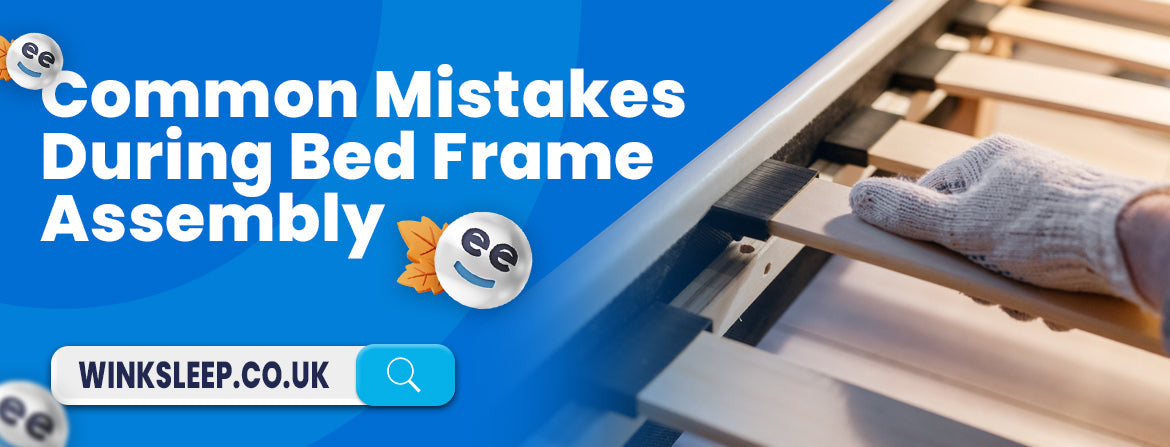Assembling a bed frame might look simple, but it is where many people go wrong. A small mistake during setup can lead to squeaks, instability, or even damage to the frame. In some cases, the errors only show later when the bed begins to shift or make noise.
The good news is most of these issues are easy to avoid. With the right approach, tools, and preparation, you can build a sturdy frame that lasts. In this guide, we look at the most common mistakes and explain how to avoid them.
Skipping the Pre-Assembly Checklist
One of the biggest mistakes is starting without preparation. Many people open the box and begin working straight away, only to find a missing screw or tool later. This often leads to frustration and wasted time.
The right approach is to begin with a checklist. Lay out all the parts on the floor, group similar screws, and tick off each piece against the manual. Check that you have the right tools, such as a screwdriver, Allen key, or spanner. Reading through the instructions once before starting also saves time. A simple pre-assembly routine prevents delays and helps avoid missing steps.
Using the Wrong Screws or Fasteners
It is common to confuse screws or bolts, especially when they look similar. Forcing the wrong part into the frame can strip the hole or damage the wood. Some people also tighten a screw in the wrong place, only to realise later that it belongs elsewhere.
The safe method is to sort and label all fasteners before starting. Place them in small trays or bowls so nothing rolls away. Begin by threading screws in by hand to confirm they fit the hole. If it feels tight or misaligned, stop and recheck. Taking a few minutes to organise saves hours of trouble later.
Over-Tightening Too Early
Another mistake is tightening each screw fully as soon as it goes in. At first, it feels right, but it quickly causes problems. The frame may become misaligned, leaving gaps or uneven sides. Over-tightening also strips threads and weakens the frame.
The correct method is to insert all screws loosely at the start. Once every part is in place and aligned, tighten them gradually in sequence. This method spreads pressure evenly across the frame. It keeps the joints secure and reduces the risk of stripped screws.
Assembling Alone
Many people try to build a bed frame by themselves. While small frames can sometimes be managed alone, larger beds are difficult. Heavy side panels and awkward angles make it easy to drop pieces or damage fittings. Worse still, it can lead to injuries if something slips.
The safer option is to have at least one other person helping. With two people, one can hold parts steady while the other attaches screws. It also makes the process faster and less stressful. If no help is available, it may be worth booking a professional assembly service.
Misaligned Holes and Stripped Threads
This is one of the most frustrating mistakes. Trying to force a screw into a hole that is not properly aligned leads to cross-threading. Once the thread is damaged, the screw will not hold tightly again. This reduces stability and may shorten the life of the frame.
To avoid this, check alignment carefully before inserting screws. Adjust the panels so the holes match up. Start each screw by hand before using tools, as this reduces the chance of cross-threading. If resistance is strong, do not force it. Instead, stop and realign. Correct alignment keeps the structure strong and safe.
Skipping the Instruction Manual
Many people think they can assemble a bed frame without reading the manual. This often leads to missing steps, attaching parts incorrectly, or even damaging the frame. Every bed frame is designed differently, and even if you’ve built one before, small details can vary.
How to Avoid It:
Always read through the instructions once before starting. Keep the manual close during assembly so you can follow each step. It saves time and prevents costly errors.
Tightening Screws Too Early
It is common to tighten screws and bolts as soon as they are attached. But this can cause alignment issues later, especially if other parts need adjusting. Over-tightening also risks damaging wooden frames or stripping screws.
How to Avoid It:
Leave screws slightly loose until all parts are in place. Once the frame is fully aligned, tighten them evenly. This makes the frame stable and prevents cracks.
Ignoring Floor Protection
Dragging parts across the floor or assembling the bed frame directly on hardwood can cause scratches and dents. This mistake often goes unnoticed until after assembly.
How to Avoid It:
Place a rug, blanket, or cardboard under the frame while building. It keeps your floor safe and makes sliding parts easier.
Misplacing Small Hardware
Bed frames often come with washers, nuts, and small screws that are easy to lose. Losing even one can stop the assembly process or leave the frame unstable.
How to Avoid It:
Use a small container or tray to keep all hardware together. Open the package on a flat surface where parts won’t roll away.
Working Alone
Some people try to assemble large bed frames by themselves. This not only makes the job harder but also risks damaging parts or hurting yourself.
How to Avoid It:
Have someone assist you when lifting heavy sections or aligning side rails. Two people can complete the job faster and more safely.
Forgetting to Check Stability
Once the bed looks complete, many skip the final step of checking stability. A bed that wobbles or creaks can become uncomfortable and unsafe.
How to Avoid It:
After finishing assembly, gently shake the frame and press on each side. If there’s movement, recheck screws and joints. Stability checks give peace of mind before placing the mattress.
Also read: How to Assemble a Divan Bed Step by Step Guide
Final Thoughts
Assembling a bed frame does not need to be stressful. The most common mistakes happen when people rush or ignore small details. Taking time to organise tools, read instructions, and check stability makes the process smooth. A correctly assembled frame supports your mattress properly and helps you sleep better.
 Build Your Bed
Build Your Bed
 Request FREE Swatches
Request FREE Swatches
 Fast Delivery on Every Product
Fast Delivery on Every Product  Klarna 0% Finance
Klarna 0% Finance  5 Year Manufacturer's Guarantee
5 Year Manufacturer's Guarantee 










